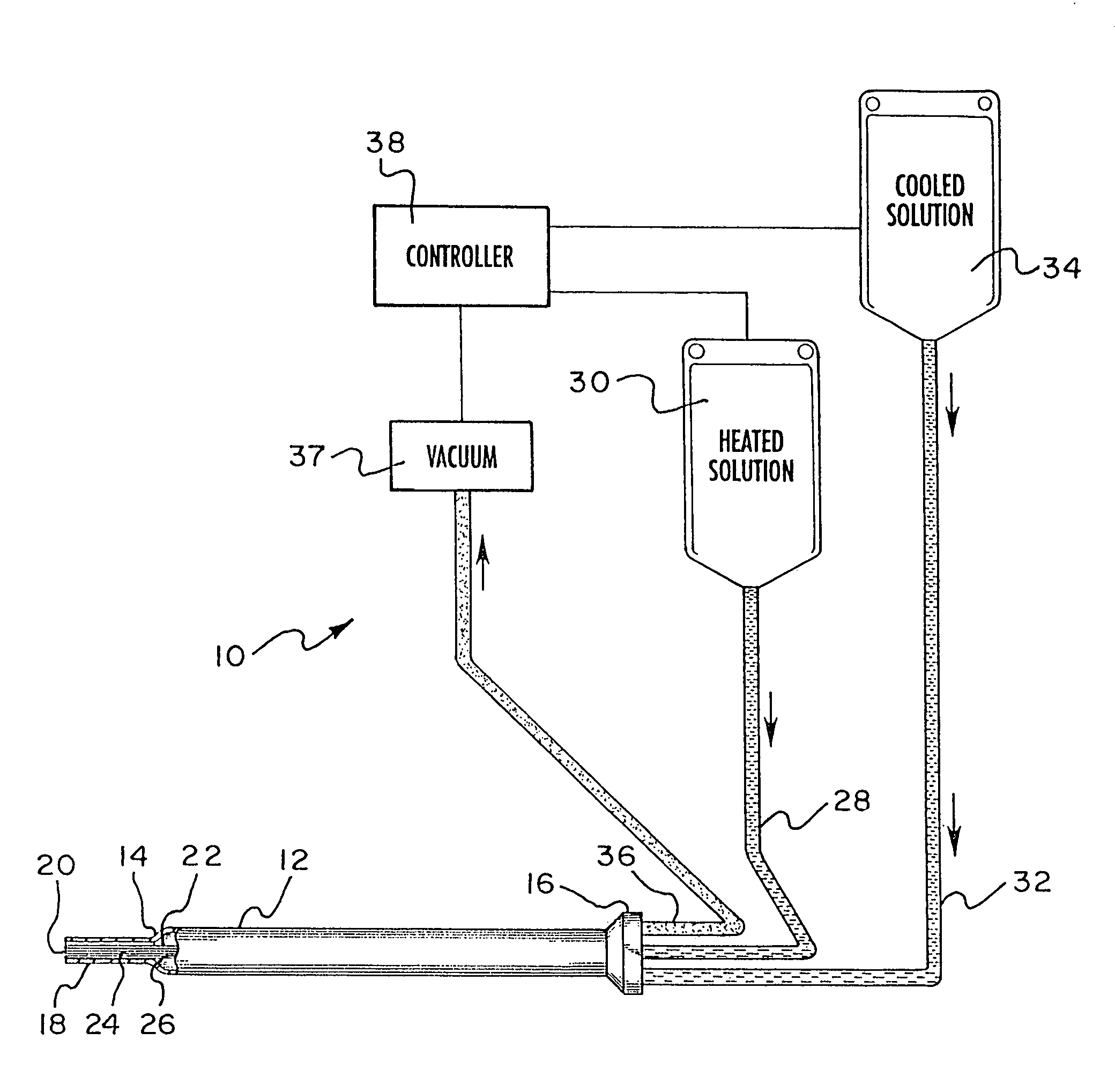Tissue liquefaction and aspiration for dental treatment
a tissue liquefaction and dental treatment technology, applied in the field of tissue liquefaction and aspiration for dental treatment, can solve the problems of inability to achieve tissue liquefaction at all, inability to “turn down” or reduce heat, and reduced thermal energy level, etc., to achieve minimally invasive, cost-effective surgery, and efficient
- Summary
- Abstract
- Description
- Claims
- Application Information
AI Technical Summary
Benefits of technology
Problems solved by technology
Method used
Image
Examples
example
[0028]Four pieces of tissue were cut from fresh bovine subcutaneous fat surrounded by muscle tissue and blood vessels. Each piece was approximately two inches by two inches by two inches. Each cube of tissue contained about 95% fat tissue and 5% muscle tissue with some obvious blood vessels present. Two cubes were placed in a control group and two cubes were placed in an experimental group. The control group cubes were taken from the refrigerator and placed in a microwave oven for two five-second intervals at a high temperature setting. This was done in order to raise the temperature of the fat tissue to approximately human body temperature. The two cubes were placed in a tray. A water pik (Teledyne Water Pik, model WP-20W) was set at a pressure setting of 5 which equates to 75 psi. The liquid shoots out at 20 pulses per second. The bolus size per pulse was 0.27 ml. Room temperature tap water was poured into the water pik well. The temperature was measured at 80° F. The tip of the w...
PUM
 Login to View More
Login to View More Abstract
Description
Claims
Application Information
 Login to View More
Login to View More - R&D
- Intellectual Property
- Life Sciences
- Materials
- Tech Scout
- Unparalleled Data Quality
- Higher Quality Content
- 60% Fewer Hallucinations
Browse by: Latest US Patents, China's latest patents, Technical Efficacy Thesaurus, Application Domain, Technology Topic, Popular Technical Reports.
© 2025 PatSnap. All rights reserved.Legal|Privacy policy|Modern Slavery Act Transparency Statement|Sitemap|About US| Contact US: help@patsnap.com


